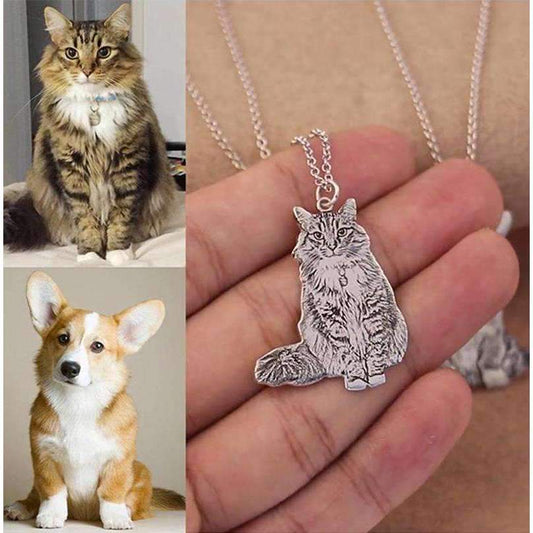Bringing a new baby home is a momentous occasion that requires adjustments for everyone, including your feline companion. Cats are creatures of habit and may find the new addition challenging, but with thoughtful preparation and patience, you can help your cat adapt to the new family dynamic. From introducing baby-related items to maintaining a consistent routine, there are several steps you can take to ensure a smooth transition for your pet.
Key Takeaways
- Start by introducing your cat to baby-related scents and sounds to help them acclimate to the new arrival.
- Use positive reinforcement to build a peaceful relationship between your cat and the baby, rewarding calm behavior.
- Maintain your cat's routine to provide stability and comfort during the transition period.
- Create safe, cat-only spaces for your pet to retreat to when they need solitude or are feeling overwhelmed.
- Be patient and offer your cat extra attention and reassurance as they adjust to the presence of the new baby.
Preparing Your Cat for the Arrival of Your Newborn
Introduce Baby-Related Items Gradually
Introducing your cat to the new baby's environment can be a delicate process. Start by bringing in baby-related items such as clothes, toys, and blankets into your home well before the baby arrives. This allows your cat to become familiar with the new scents and objects at their own pace.
It's essential to create a positive association with these items. Place treats or your cat's favorite toys near the baby's belongings to encourage curiosity and positive feelings.
Here's a simple step-by-step guide to help your cat adjust:
- Introduce baby lotion or other products on your skin early on.
- Allow your cat to explore baby furniture like cribs and strollers.
- Gradually expose your cat to baby sounds, perhaps through recordings.
Remember, new cat owners need patience and a slow approach. There may be challenges, but with gentle introductions and a comfortable environment, your cat will learn to adapt to the new family member.
Familiarize Your Cat with Baby Scents and Sounds
Helping your cat get accustomed to the new baby involves more than just visual introductions. Scents and sounds are a crucial part of your cat's world, and familiarizing them with these can ease the transition. Start by bringing in baby-related items such as blankets or clothing well before the baby arrives, allowing your cat to explore these items at their own pace.
Gradually introduce the sounds of a baby as well. This can include recordings of a baby's cry or the hum of a baby monitor. Keep the volume low initially and increase it over time to simulate the actual environment once the baby is home.
Here are some steps to consider:
- Place baby-scented items near your cat's favorite areas.
- Play baby sounds for short periods each day, gradually increasing the duration.
- Reward your cat with treats and affection for calm behavior around these new stimuli.
Remember, patience is key. Your cat may need time to adjust to these new experiences, and it's important to monitor their reactions and proceed at a pace that's comfortable for them.
Adjust Your Cat's Routine in Advance
As you prepare for the arrival of your newborn, it's essential to maintain your cat's regular routine as much as possible. Consistency in their daily schedule provides your cat with a sense of stability, which is crucial during this period of transition. Start by making gradual changes to your cat's environment and routine well before the baby arrives. This could include shifting feeding times or play sessions to align with the baby's future schedule.
To minimize stress for your feline friend, introduce any changes incrementally. A sudden overhaul of their routine could lead to anxiety or behavioral issues.
Remember, your cat's comfort and sense of security come from predictability. If you typically engage in play at a specific time, strive to continue this practice. While it may be challenging to juggle the needs of a child and a pet, the effort to keep your cat's routine intact can prevent feelings of neglect or jealousy. Here are some steps to consider:
- Evaluate your current routine with your cat
- Plan how it might be affected by the baby's arrival
- Implement changes to the cat's routine gradually
- Monitor your cat's response to these changes
By taking these proactive steps, you can help ensure a smoother introduction between your cat and your new baby, fostering a harmonious home environment for all.
Fostering a Positive Cat and Baby Relationship

Use Positive Reinforcement Techniques
Incorporating positive reinforcement techniques can significantly aid in building a harmonious relationship between your cat and the new baby. Reward your cat's calm and curious behavior with healthy treats or their favorite playthings during initial interactions with the baby. This not only encourages good behavior but also helps your cat associate the baby with positive experiences.
- Praise your cat when they behave well around baby-related items.
- Offer treats to reinforce positive interactions.
- Use toys to distract and engage your cat, preventing overstimulation.
Consistency in your approach is crucial. Ensure that all family members participate in reinforcing these positive behaviors, so your cat receives clear and consistent messages.
Remember, patience is essential. Allow your cat to explore at their own pace and retreat if they feel the need. Gradually increase the duration of their encounters, always observing their body language for signs of stress or aggression. By consistently rewarding positive behavior, you create a foundation for a lasting positive association between your cat and your newborn.
Supervise Initial Interactions
When introducing your cat to the new baby, it's essential to supervise their initial interactions closely. Start with short sessions where both the cat and baby are calm, gradually increasing the time they spend together. Maintain a soothing voice and demeanor to keep the atmosphere relaxed and positive.
- Positive reinforcement is key. Reward your cat with treats and praise for calm or curious behavior around the baby.
- If any signs of aggression or discomfort appear, separate them gently and try again later.
- Establish safe zones for your cat to retreat if they feel overwhelmed.
Remember, patience is crucial during these first meetings. It's a time of significant change for your cat, and they will need your support to build a new routine that includes the baby.
Once your cat shows acceptance of the baby's presence without aggression, you can allow them to make full contact, still under your watchful eye. This careful approach ensures a safe and positive first interaction, laying the groundwork for a strong bond between your cat and the new family member.
Encourage Gentle Behavior
Teaching your cat to be gentle with the new baby is crucial for a harmonious household. Start by modeling calm and gentle behavior around your cat to set a good example. Use treats and praise to reward your cat when they remain calm and gentle around baby-related items.
- Introduce the concept of gentle touch to your cat by petting them softly and avoiding any rough play.
- If they do hiss, don't punish or reassure them. Ignore the unwanted behavior, remain calm, and only give them positive attention if they behave favorably.
It's important to maintain a peaceful environment during these introductions. Any signs of aggression or discomfort from the cat should be noted, and if necessary, give them space and try again later.
Remember to educate any children on how to interact with the cat. Show them how to gently stroke the cat and avoid sudden movements that could startle them. Consistency in these actions will help both your cat and child understand and respect each other's boundaries.
Maintaining Your Cat's Routine and Comfort

Keep Feeding and Playtime Schedules Consistent
Maintaining a consistent routine for your cat is crucial, especially when introducing a new baby into the home. Keep feeding and playtime schedules consistent to provide your cat with a sense of stability and security. This consistency helps minimize stress and anxiety that can come with changes in the household.
- Life will no doubt be hectic caring for your new baby, but try to maintain regular routines as much as possible to help your pet adjust. Routine is important to pets because they need to know what to expect. Think ahead and gradually begin establishing new routines early on.
Consistency is key when implementing house rules for pets. Ensure that all family members understand and follow the same guidelines. This helps avoid confusion for your pet and ensures they receive consistent messages about what is acceptable behavior.
Remember, your cat's well-being is tied to the predictability of their daily life. By keeping their feeding and playtime schedules intact, you're helping them navigate the new family dynamics with less stress. If you typically play with your cat at a certain time, do your best to keep doing that, even with the new baby's demands.
Provide Comfortable Safe Spaces
Creating a comfortable safe space for your cat is crucial during the transition of welcoming a new baby into your home. Cats are creatures of habit and may feel stressed or anxious with the changes that a new family member brings. To help your cat adjust, establish a designated area where they can feel secure and undisturbed.
- Ensure the space is away from high-traffic areas to minimize stress.
- Include familiar items such as their bed, toys, and scratching posts to promote a sense of familiarity.
- Remove any potential hazards like breakable objects or dangling cords.
By providing a safe haven, your cat can retreat whenever they need solitude or a break from the baby's activities. This helps maintain their mental well-being and reduces the likelihood of stress-related behaviors.
Remember to respect your cat's need for privacy and avoid forcing interactions, especially if they appear fearful or try to hide. Patience and understanding are key as your cat navigates this new chapter.
Continue Regular Vet Check-ups and Care
Maintaining your cat's health is a continuous process that extends well beyond the initial adjustment period of introducing a new baby into your home. Regular vet check-ups are vital to ensure your cat remains healthy and receives necessary vaccinations, parasite control, and dental care. During these visits, it's the perfect opportunity to discuss any concerns about your cat's behavior, nutrition, or overall well-being with your veterinarian.
It's crucial to keep a consistent schedule for your cat's health appointments, as this helps in early detection of any potential issues and keeps your cat's medical records up to date.
Remember to also inquire about grooming needs such as nail trimming and the benefits of microchipping. These aspects of care contribute to your cat's overall health and comfort. By staying proactive with vet visits, you're not only looking after your cat's physical health but also ensuring they are in the best state to interact safely and happily with your new family member.
Creating a Safe and Secure Environment

Designate a Cat-Only Area
Ensuring your cat has a designated area that is solely theirs is crucial when a new baby arrives. This space acts as a refuge where your cat can retreat to feel secure and undisturbed. Designate a room or a specific corner that is equipped with all of your cat's essentials, such as their bed, litter box, toys, and scratching post. It's important that this area is consistently accessible to your cat and remains unchanged to provide a sense of stability.
By creating a cat-only area, you're giving your feline friend a sense of ownership and control over their environment, which can significantly reduce stress and anxiety.
Here's a simple checklist to ensure you've covered all the bases for your cat's personal space:
- A comfortable bed or sleeping area
- Litter box placed away from food and water
- Food and water dishes
- Scratching post or pad
- A selection of toys
Remember, the goal is to make this space inviting and safe for your cat, away from the hustle and bustle of the household's new rhythm.
Implement Baby Gates for Controlled Exploration
Baby gates serve as an essential tool in creating a safe environment for both your cat and your new baby. By strategically placing baby gates, you can allow your cat to explore and maintain a sense of freedom while ensuring your baby's space is protected. This controlled exploration helps to prevent unwanted encounters and keeps your cat away from areas that may be unsafe or unsettling for your little one.
Baby gates not only safeguard your baby but also prevent your cat from feeling excluded. They can be used to block off areas with breakable objects or dangling cords that could entice your cat's curiosity, fostering a sense of security for your pet.
Here are some tips for effectively using baby gates in your home:
- Keep the door closed to any room your baby is sleeping in, using a baby gate if there's no door.
- Designate a baby-free zone where your cat can retreat, using baby gates to establish these boundaries.
- Ensure that baby gates are sturdy and properly installed to prevent your cat from jumping over or knocking them down.
Remember, while baby gates are helpful, they are not a substitute for supervision. Always keep a watchful eye on the interactions between your cat and your new baby to ensure a harmonious household.
Ensure Your Cat Has Its Own Sanctuary
Ensuring that your cat has a sanctuary of its own is crucial for its well-being, especially when a new baby is introduced to the home. This sanctuary should be a designated area where your cat can feel secure and undisturbed. It's a place for them to retreat when they need solitude or are feeling stressed.
- Choose a quiet room that's not frequently used by the family.
- Equip the space with your cat's essentials: a comfortable bed, litter box, food and water dishes, and favorite toys.
- Consider adding a scratching post or cat tree for their comfort and entertainment.
By providing a personal sanctuary, you're giving your cat a sense of control and safety, which can significantly reduce anxiety during the transition period.
Remember to respect your cat's need for privacy and refrain from forcing interactions with the new baby. The sanctuary should be relatively far from the baby's room to minimize disturbances and allow your cat to acclimate at its own pace.
Patience and Support During the Transition

Allow Time for Adjustment
Bringing a new baby into your home is a significant change for everyone, including your feline friend. Allowing your cat the necessary time to adjust is crucial for a smooth transition. Just as people need time to get used to new situations, cats also require a period to become familiar with the changes in their environment and routine.
It's essential to observe your cat's behavior during this period and be responsive to their needs. Here are some tips to support your cat:
- Maintain a calm and quiet atmosphere as much as possible.
- Gradually introduce your cat to the baby's presence.
- Be patient and avoid forcing interactions between your cat and the baby.
Remember, some cats may adapt quickly, while others might need more time. It's important to provide a nurturing environment and give them space to adjust at their own pace.
Cats are creatures of habit, and a new baby can disrupt their sense of normalcy. Monitor your cat's behavior and health, and consult with your veterinarian if you notice any concerning changes. With patience and support, your cat can successfully acclimate to the new family dynamic.
Offer Extra Attention and Reassurance
During the transition period, it's crucial to offer extra attention and reassurance to your cat. This can help mitigate feelings of neglect or jealousy as the new baby demands more of your time. Here are some ways to provide this support:
- Maintain the usual playtime sessions, even if they need to be shorter.
- Offer frequent petting and cuddle sessions to reassure your cat of your affection.
- Use treats and their favorite toys to engage them and show that they are still valued.
Remember, your cat's emotional well-being is just as important as their physical health. Providing extra love and attention during this time can help ease their anxiety and foster a smoother transition.
If you notice any signs of stress or behavioral changes in your cat, it may be necessary to increase the level of attention you provide. Keep an eye on their needs and be ready to adjust your approach to ensure they feel secure and loved.
Monitor Your Cat's Behavior and Health
Keeping a close eye on your cat's behavior and health is crucial during the transition period of introducing a new baby to the household. Changes in your cat's demeanor or habits can be early indicators of stress or illness, and addressing these promptly can prevent more serious issues.
- Look for signs of stress such as hiding more than usual, changes in appetite, or litter box issues.
- Monitor for any health concerns, including changes in grooming habits, weight loss or gain, and signs of lethargy.
It's important to maintain a calm and stable environment for your cat. Wait to introduce them until the home is quiet and relaxed, ensuring they don't feel overwhelmed by the new changes.
Regular vet check-ups are essential to catch any health issues early. Keep a record of any behavioral changes and discuss them with your vet during visits. By being vigilant and proactive, you can help your cat maintain its well-being and adapt more comfortably to life with a new family member.
Conclusion
In conclusion, welcoming a new baby into your home is a significant event for all family members, including your beloved cat. By following the tips outlined in this article, such as gradual introduction, positive reinforcement, maintaining routine, and providing safe spaces, you can help ease the transition for your feline friend. Remember to be patient, offer reassurance, and continue to show love and attention to your cat as they adjust to the new family dynamic. With time and care, your cat and baby can develop a harmonious and loving relationship, enriching the lives of everyone in the household.
Frequently Asked Questions
How can I prepare my cat for the arrival of a new baby?
Start by gradually introducing your cat to baby-related items and scents, and adjust their routine in advance to align with the changes that will occur once the baby arrives.
What are some ways to foster a positive relationship between my cat and the new baby?
Use positive reinforcement techniques, closely supervise initial interactions, and encourage your cat to display gentle behavior around the baby.
How important is it to maintain my cat's routine after the baby comes home?
Maintaining your cat's routine is crucial for their sense of stability and comfort during the transition period. Keep feeding and playtime schedules consistent and continue regular vet check-ups and care.
What kind of safe space should I create for my cat in the new environment?
Designate a cat-only area, possibly with a tall baby gate to allow for controlled exploration, and ensure your cat has a comfortable sanctuary to retreat to when they need solitude.
How can I support my cat during the transition of welcoming a new baby?
Be patient and allow your cat time to adjust. Offer extra attention and reassurance, and monitor their behavior and health for any signs of stress or discomfort.
Is it normal for my cat to feel stressed when a new baby arrives, and how can I help?
It is normal for cats to feel stressed with such a significant change. Help your cat by preparing them beforehand, providing safe zones, and giving them time and attention to adapt to the new family dynamic.




